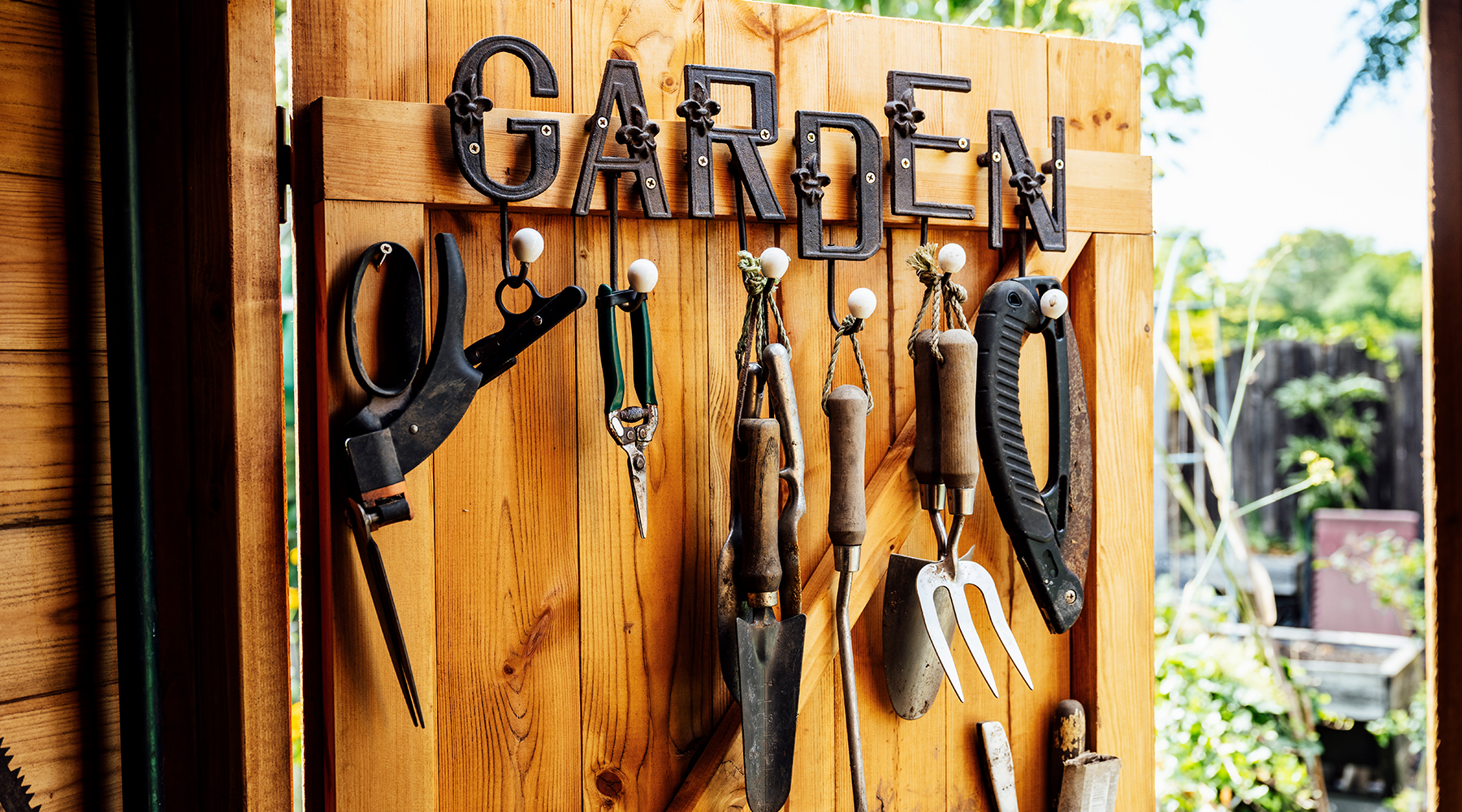Followed our tips for getting your garden verdant, vibrant and ready for sunshine? Now you can sit back, relax and enjoy all your hard work. Maybe it’s time to pour yourself a refreshing cocktail, fold out the deck chair and while away the summer listening to the birdsong… how idyllic.
If, however, your green fingers hate being idle, then we’ve created a list of five mini garden projects to keep you occupied outside this summer. Whether you’ve got a day or two to spare, or you fancy getting your gardening gloves on something a bit more challenging, there’s a project to suit.
Go potty
If your deck is looking a little sparse or you want to add some structure, interest and architecture to your garden, then pots and containers are the way to go. Wonderfully versatile, they can be moved around your space depending on the season, and with a multitude of different sizes and shapes, from Romanesque urns to cattle troughs and old baths, containers are a sure-fire way to add a whole new look to your outdoor space.
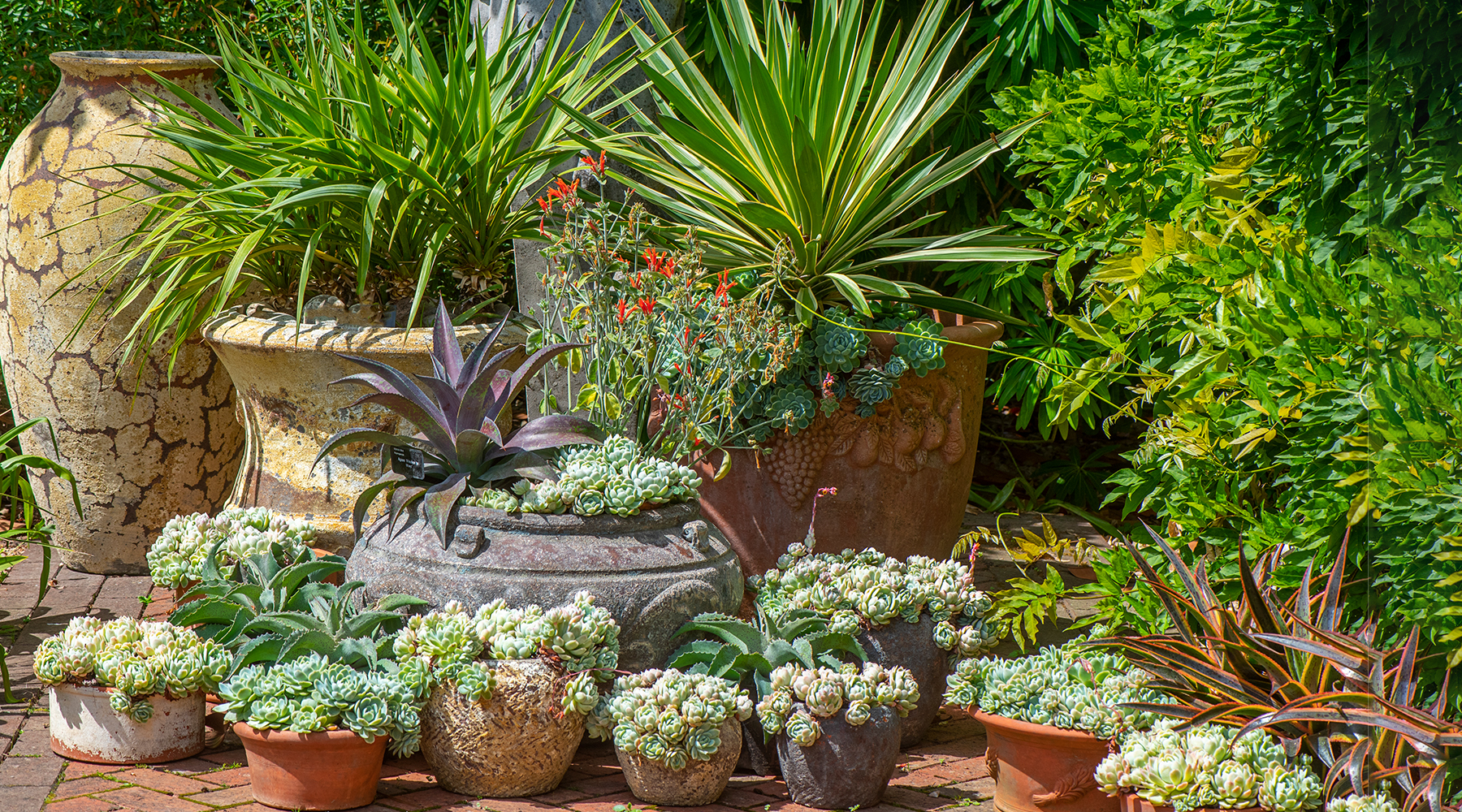
To make this into a real project, you need to think the more the merrier and choose lots of different sizes that can be grouped together to create a visually striking focal point. You can either select a theme or colour scheme to run throughout your display, like classic terracotta or elegant sandstone, or be eclectic. Mix and match different ideas, search out flea markets, boot sales and antiques fairs to find beautifully crafted, pre-loved pots that are weather-worn and wonderful.
When it comes to what’s inside your pots, an exciting mix of plants is key. From trees and bamboos that offer height and shade, to manicured shrubs and billowing grasses for structure, all the way down to bedding plants – you need variety in your pots. When they’re all huddled together, the assortment of colours, textures and sizes will make a magnificent display and one that you can change up throughout the seasons.
Up the garden path
One way to make a dramatic change to the look of your outdoor space is by adding a pretty pathway. Move aside cement mixers and paving slabs, this is a DIY project, we’re talking reclaimed-brick walkways leading up to the garden shed, mosaic stepping stones to add colour and texture, or gravel paths running up to the backdoor (but not quite all the way, no one wants a gravelly kitchen floor!)
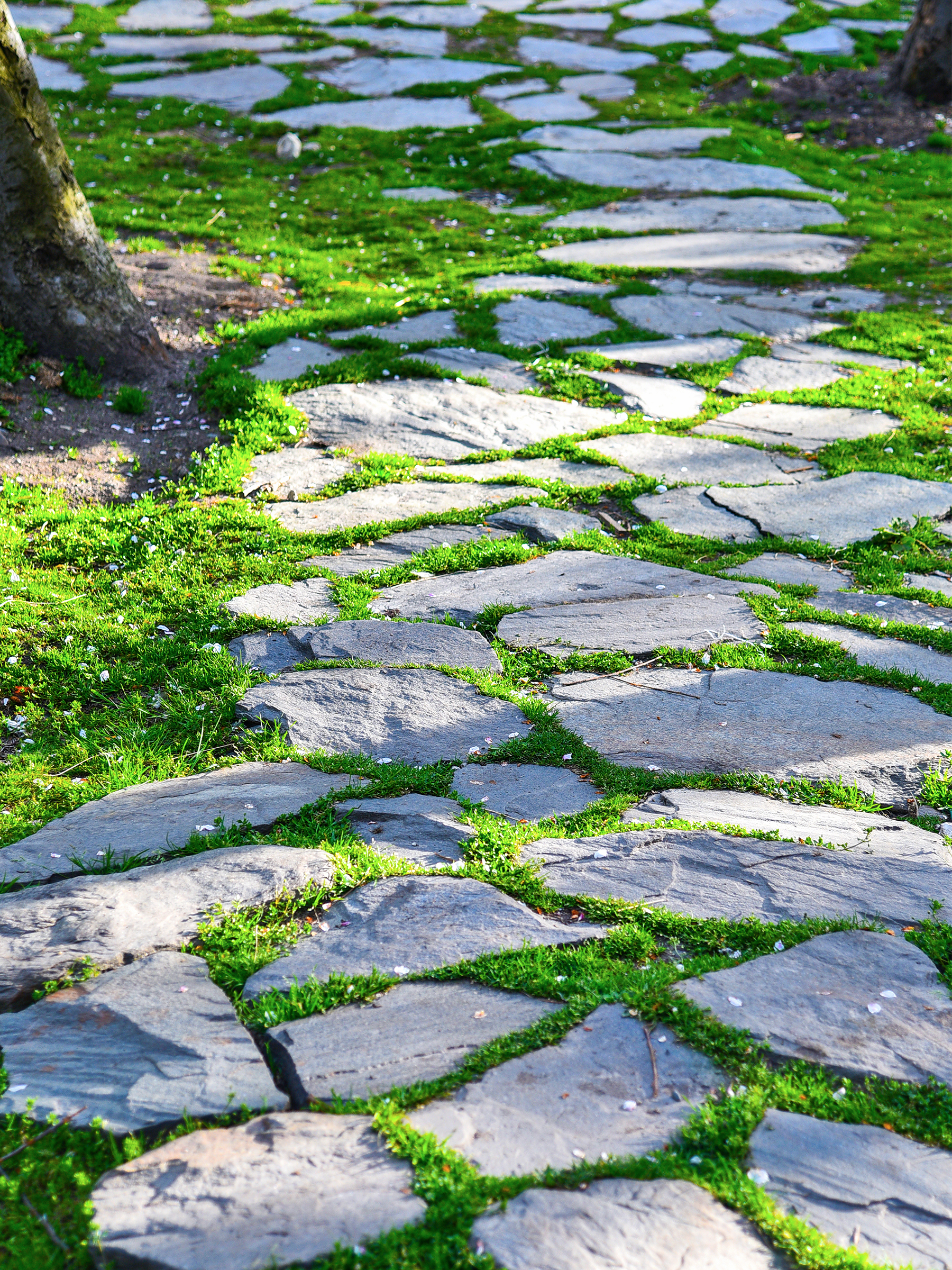
If steppingstones have you jumping for joy, trail them across your lawn, scatter them among your vegetable patch for easy harvesting or use them to lead your guests to the secret hideaway at the bottom of the garden. There are lots of different styles you can consider too. Beautiful mosaic-print tiles look fabulous laid one after the other at angles and surrounded by low-growing rockery plants like thyme or house leeks.
For a rustic look, channel inspiration from the beautiful National Parks of the Lake and Peak Districts with natural limestone. Gravel paths, favoured by everyone from stately home gardeners to Mediterranean homeowners, can be a stunning way to give your garden a perfected path look. It’s not tricky, but there is some heavy lifting involved so get the kids/grandkids involved if you can!
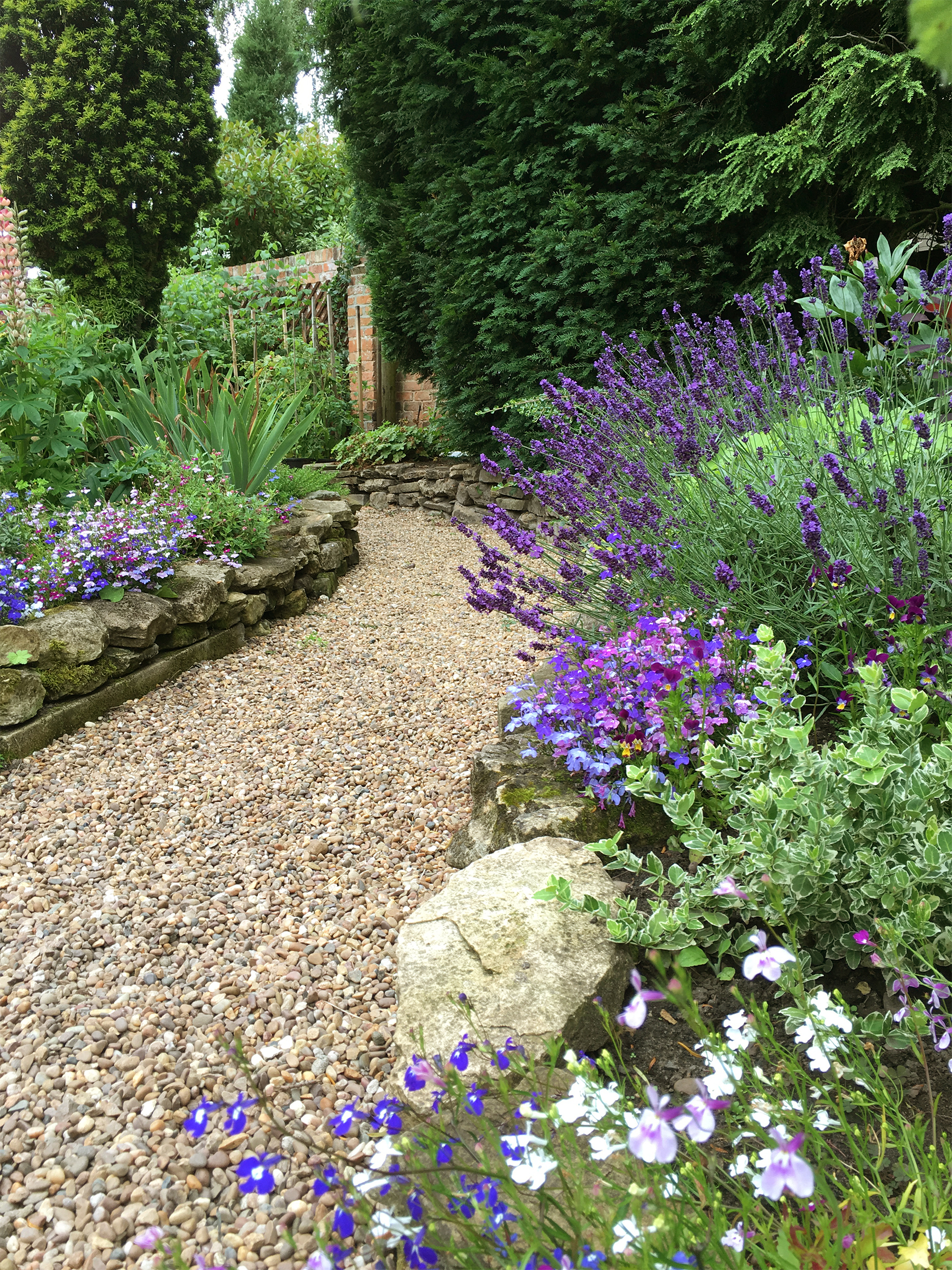
Once you’ve decided where your undulating path will take you, (the best thing about gravel paths is they don’t have to be straight) mark it out with string and then dig out a trench a few inches deep by skimming off the topsoil or turf. Then flatten and compact the earth underneath and add your edging. Larger stones or treated wood look lovely but can shift about over time, while steel and plastic options are also available that sit flush between the gravel and the earth either side. Then add a layer of hardcore and lay down your weed membrane or landscape fabric, and finally shovel on your chosen gravel and rake smooth. Ta-dah!
Get composting
Not the most glam of garden projects, granted, but such a rewarding one if you do decide to build your own compost heap. Of course, there are bins you can buy and set up in your garden and you’re good to go (with instructions), but this is project gardening, and we can DIY our own compost heap, right!?
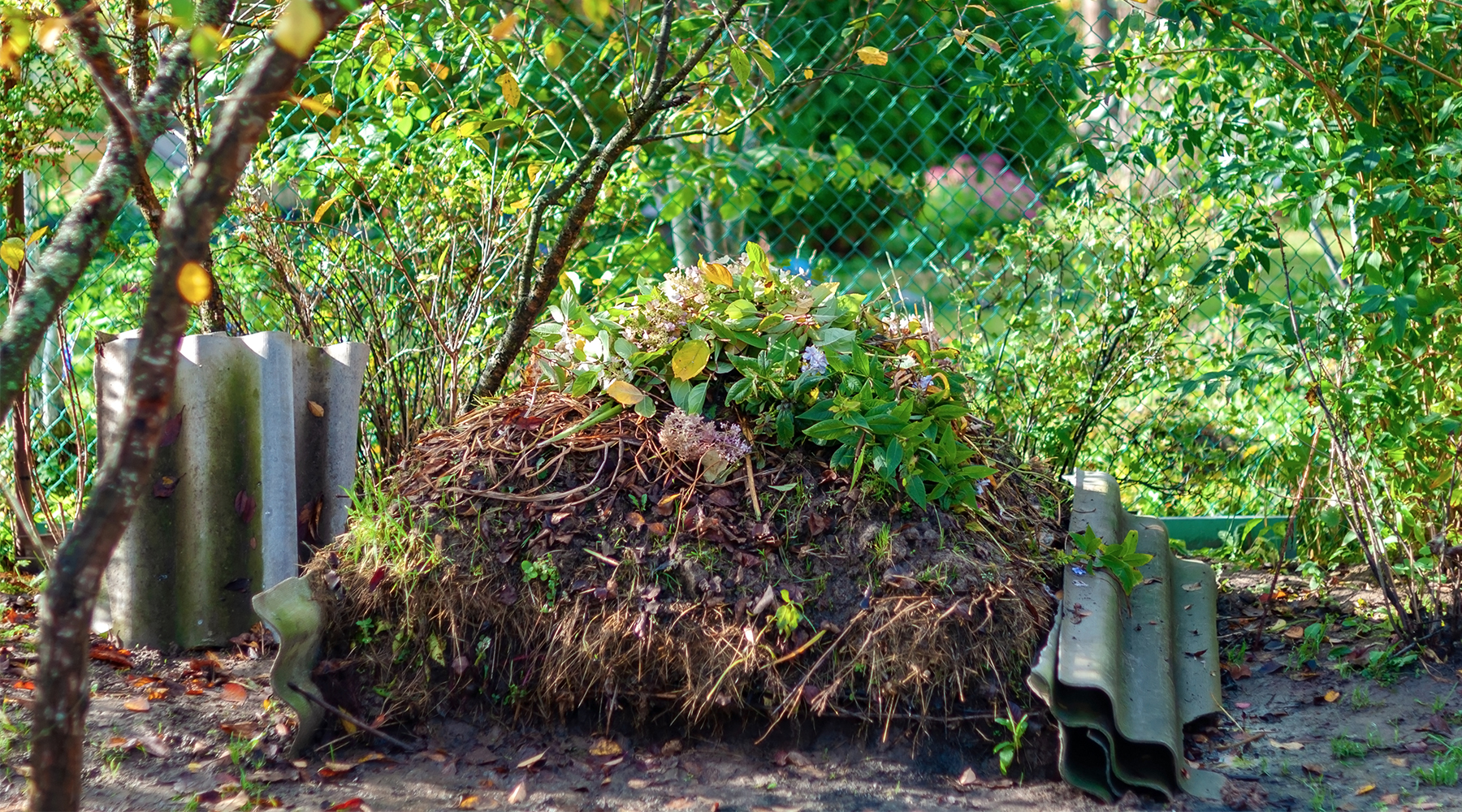
If you have a big outdoor space, you don’t really need to do much more than start adding your garden and kitchen waste to a pile in a secluded corner. But if your garden doesn’t have the room for all that free-flowing goodness, a more structured heap is in order. First, decide on your compost site (away from the house for obvious reasons), then gather the essentials together. You will need three wooden pallets, some stakes, garden wire and a mallet.
Compost heaps can sit directly on the ground, so all you need to do is angle your three pallets on their ends to create a horseshoe shape. Keep them in place with stakes inside the pallets using the mallet and then secure with garden wire. A chicken wire wrap around the outside of the palettes is optional. Now you can start to ‘make’ compost, add anything from dried leaves and grass cuttings to vegetable peelings to your heap, and then wait. Soon you’ll have lovely rich homemade compost to add to your pots, beds and borders!
Tackle the tool shed
Whether yours is like grandad’s workshop full of rusty old tools he hasn’t used in years, more of a woodshed with the remnants of old DIY projects, or the place where only the lawnmower gets dragged in and out, the dreaded tool shed sort out is happening!
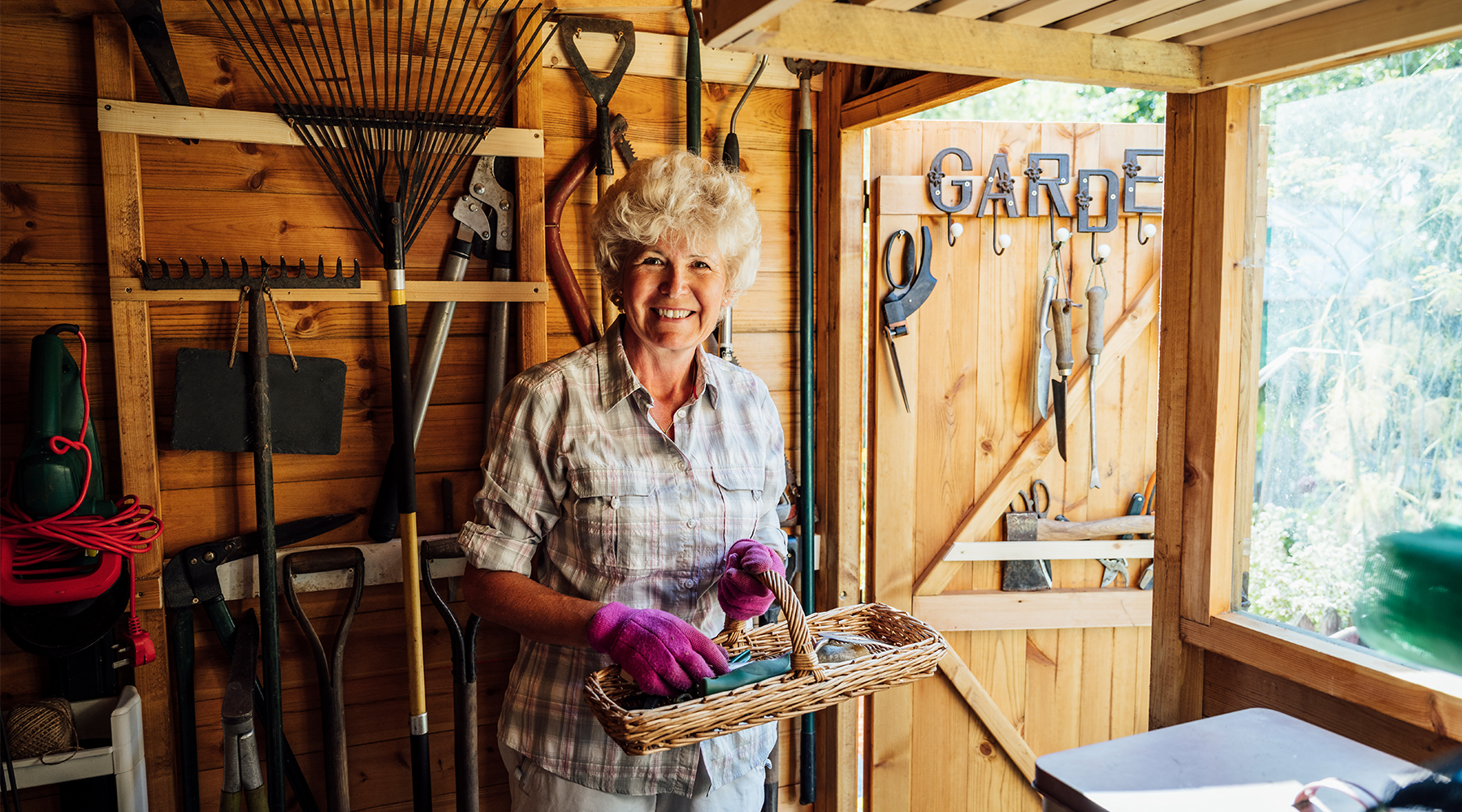
What better time to pull everything out onto the lawn and really have a clear out than when the sun is shining? Dust away those cobwebs, throw away those blunt and rusty tools you no longer use, clear away the old plastic pots and nearly empty bags of compost (you’ve created your own now anyway!) and get scrubbing! Put down a tarpaulin or an old bedsheet on your lawn and lay everything out at once. It’s so much easier to see what you have, and how many duplicates you have too. Do you really need three shovels? (No, you don’t).
When it comes to putting it all back in your shed, try and create a more accessible layout. Use hooks and nails to hang things from beams and walls. An old dresser is a classic shed staple for a reason, shelves are also essential, as are large storage tubs for your bigger garden tools. Keep your hoes, rakes and forks in easy reach and organised by displaying them in stands by the door.
Cosy up your patio
Everyone talks about making your garden an extension of your home, allowing you extra room for entertaining or just everyday living. Only, our beautiful British weather doesn’t allow for us to be al fresco that often…. So, this project is all about making your patio or deck into a sheltered place that is more versatile and able to withstand more of our chillier British days.
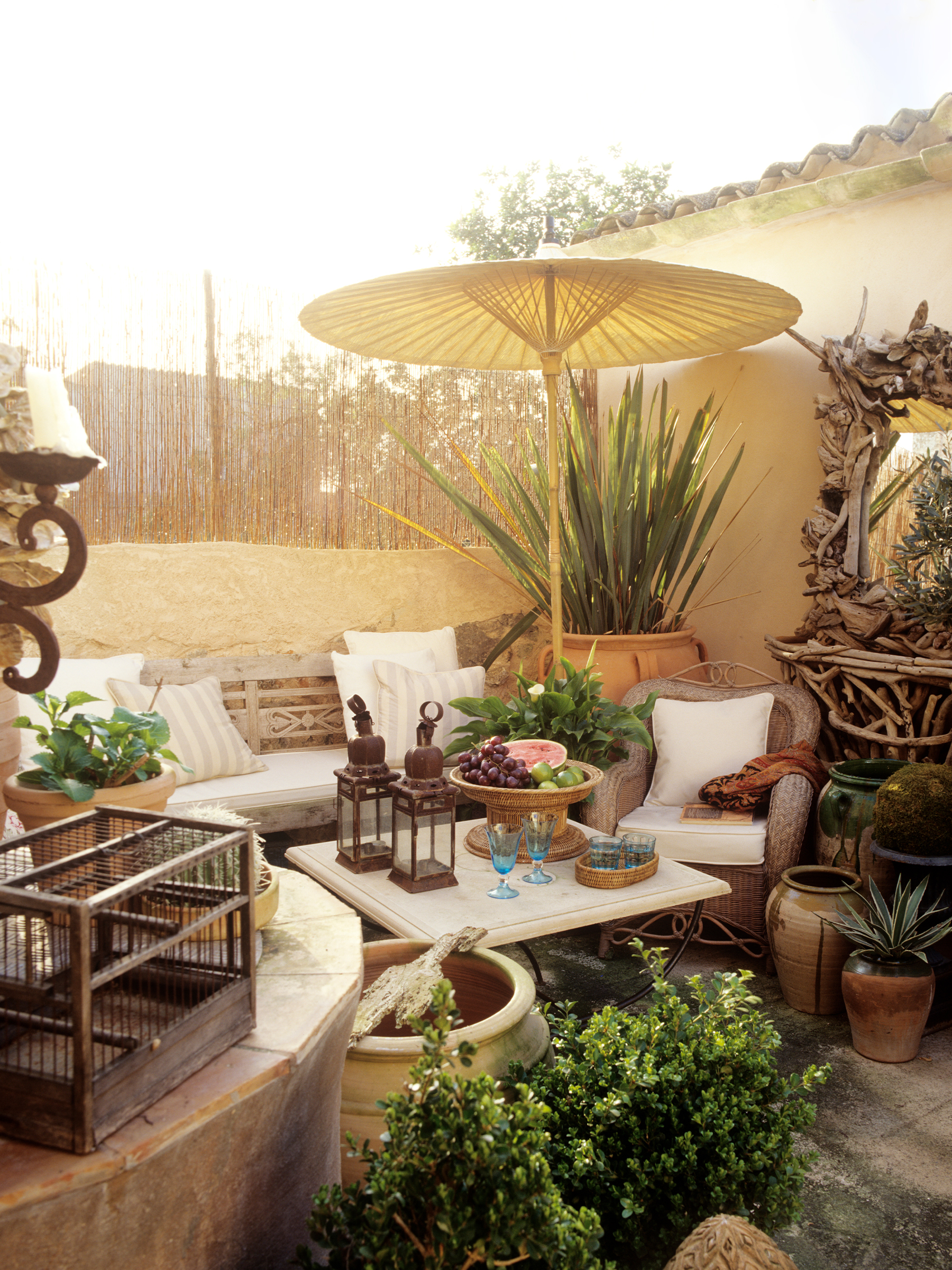
Building raised beds around the outside is a simple way to add shelter as well as colour to your space, and it automatically lends that cosy feeling. Large soft cushions, beanbags (the horror!) pots (see, now that pot display is coming in handy!) and weighty furniture to withstand a breeze or two are real problem solvers. Garden umbrellas can also be multi-functional – not only do they provide shade for sunny days, they’re also fab for keeping off fine drizzle too!
For the final finishing touches to make your space more weatherproof, add lots of candle lanterns, string lights and, if you really want to splash out, an outdoor heater would be perfect. One sure-fire way to extend your home outside is to make sure it’s warm, as well as cosy!
For more ideas, inspiration, plants, tools and more visit our garden department page now.

